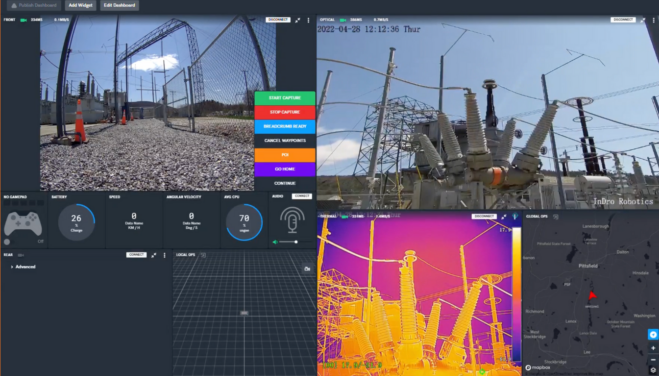By Scott Simmie
We thought, as we embark on a New Year, it might be fun to look back on the year that was. Specifically, to document some of the highlights that occurred within InDro Robotics.
Most of you are familiar with the company by now. For those who aren’t, InDro is a Research and Development company. We identify market needs and create new solutions we sell to clients. Sometimes companies (including very big ones) approach InDro and ask us to help them solve a problem. We also do service provision, deploying ground and aerial robots (drones) globally for complex tasks and data acquisition. In addition, we collaborate on many research projects, looking at new ways that technology can be put to positive use-cases.
You can get the Big Picture in this What InDro Does feature, but that’s it in a nutshell.
But what does that look R&D look like in the real world? Let’s recap our 2022 successes, starting with the launch of our Sentinel remote inspection robot.
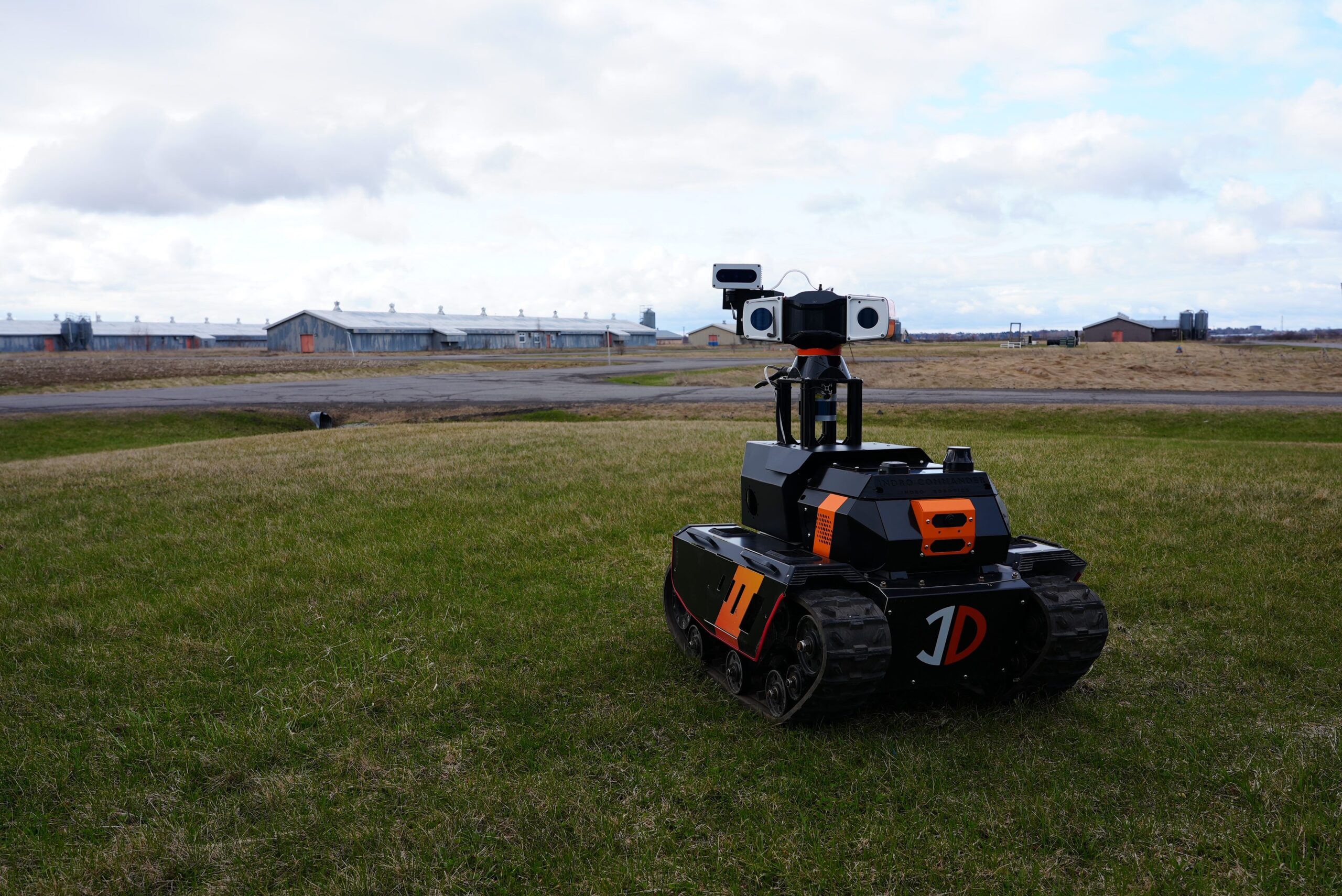
Remote inspection workhorse
Sentinel has been built, from the ground up, with one purpose in mind: To carry out remote inspections of facilities such as electrical substations or solar farms. These inspections are carried out over 4G or 5G, meaning the facility could be hundreds – even thousands – of kilometres away.
Sentinel’s rugged mobility has its roots in the workhorse Bunker platform. Featuring tread locomotion, it’s ideal for locations where the environment can at times be hostile. Mud, snow, ice are no deterrent. So that’s the brawn.
The brains come from InDro Robotics. Specifically, the addition of our InDro Commander module; the black and orange box sitting on top of the Bunker.

InDro Commander
This module plays a significant role with Sentinel and other 2022 products. Commander is a bolt-on solution that enables remote teleoperations over 4G or 5G, as well as rapid sensor integration and other robot modifications. It contains a powerful Edge computer for onboard processing, as well as the complete Robot Operating System software libraries (ROS1 and ROS2). It’s literally Plug & Play – eliminating the time and hassle of manual sensor integration. You can get the full scoop on Commander here.
With Commander connected to the Bunker base, our engineers were ready to start customizing Sentinel. They added a 30x optical Pan-Tilt-Zoom (PTZ) camera – complete with a lens ‘windshield wiper’ for inclement weather – a thermal sensor and LiDAR. They also enabled wireless charging, and programmed optical recognition so that Sentinel can autonomously back up to its charging dock.
Plus, we made Sentinel super simple to operate. Running a dashboard on your laptop or desktop, you simply plug in an Xbox controller to control direction, speed and the camera’s PTZ functions. And the data? It comes into the dashboard with an easy-to-understand display. You can even customise it so that, for example, detection of a component with temperatures exceeding a predefined limit will set off an alert.
Below: A screengrab of the detailed Sentinel dashboard, during a mission you’ll hear about in a moment…
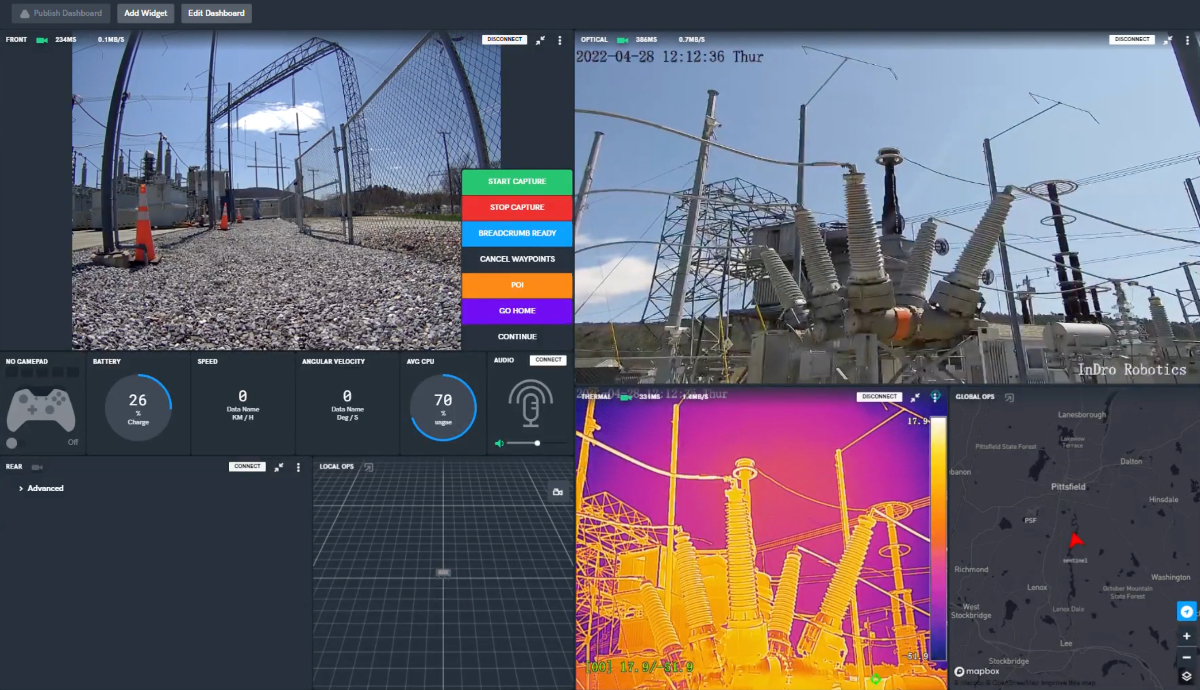
A substation solution
InDro developed Sentinel with remote teleoperation in mind. Specifically, for facilities like electrical substations, solar farms, etc. These installations are typically in rural locations, far from the nearest major city. They also tend to be unstaffed, requiring frequent inspection trips by human beings. In addition to scheduled monitoring, people are frequently dispatched following severe weather events to assess whether there’s been damage.
Wouldn’t it be easier to have a remotely teleoperated robot do the job on demand? We believe so.
In fact, we’re not the only ones with this kind of vision for remote inspection. One of the highlights of 2022 was being invited to Lenox, Massachusetts, by the Electric Power Research Institute, or EPRI. The non-profit institute is constantly carrying out research to look at how new technologies can be put to use to improve the generation and distribution of electrical power. Or, as it puts it, “driving innovation to ensure the public has clean, safe, reliable, affordable, and equitable access to electricity across the globe.”
It shares its findings with some 450 utilities and companies around the globe. And when it heard about Sentinel, InDro was invited down to its test facility. We spent a week there, putting Sentinel through its paces inspecting an EPRI test lab electrical substation. The facility can be energised or de-energised to determine whether electrical-magnetic fields interfere with test devices. It can simulate heavy rain through a set of overhead water pipes capable of drenching the facility. Plus, we ran the tests during the day and overnight, using both teleoperations and autonomous missions.
We were pleased with how Sentinel performed, and also learned a few things to even further tweak its capabilities. So Sentinel – which has been deployed as far away as a California solar farm – is definitely one of our 2022 highlights. You can learn more about our EPRI testing here.
Below: A video that offers a snapshot of key Sentinel features. This was Sentinel 1.0; we’ve since lowered the PTZ camera and made other enhancements.
The aerial side of things
While we’ve been looking at ground robots, InDro is very much involved in the world of drones. In fact, the company’s early years were pretty much exclusively devoted to R&D and service provision in the drone world. That’s still a large part of what we do.
An early 2022 highlight (and one of several) was our work with the Ottawa International Airport’s (YOW) Drone Detection Pilot Project. The program involves long-range drone detection hardware and software from InDro Robotics and micro-doppler radar detection from QinetiQ. Collectively, this technology provides a comprehensive look at any drone operations taking place in the vicinity of the airport – and beyond.
YOW, in conjunction with NAV Canada, is interested in getting a better picture of drone traffic in order to ensure the safety of crewed aircraft and to develop protocols should a Remotely Piloted Aircraft System pose a threat to traditional aircraft.
But data collected in early 2022 was an eye-opener. During the anti-vaccine mandate protests in Ottawa, InDro’s longer-range system detected drones flying in a restricted flight zone over Parliament Hill and elsewhere in the downtown Ottawa core, with a spike during police operations to clear the protests. A total of 27 different drones carried out 59 flights over a period of four days. Of those, 25 flights exceeded 400’ above ground level (Transport Canada’s limit, except in special circumstances). These flights all took place in restricted airspace. A small number were carried out by law enforcement, but the vast majority were not. Fifteen unique drone IDs were detected, and one flight took place at 1583′ AGL – nearly four times the legal altitude limit.
You’ll get a look at some of the data in the images below; you can also read an in-depth story here. The Ottawa Citizen also wrote about this. Finally, on the drone detection front, it’s worth noting that a sister company, Bravo Zulu Secure, specialises in both drone detection and mitigation.
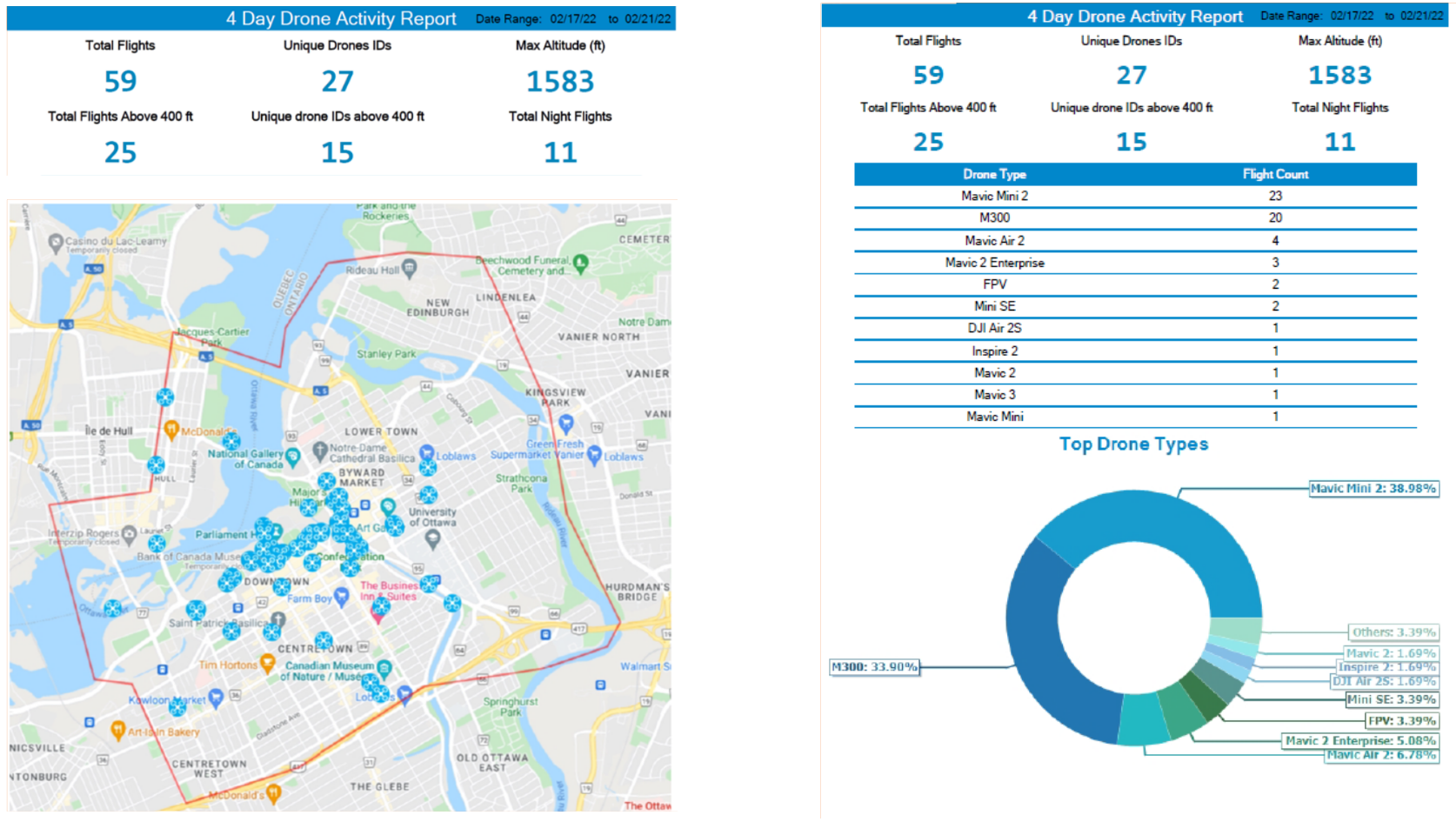
Expanding the capabilities of drones
InDro Robotics was a pioneer in remote operations, obtaining Canada’s first Special Flight Operations Certificates for Beyond Visual Line of Sight flights carried out over 4G and 5G networks. And we continue to push the envelope.
At our Area X.O facility, 2022 saw us successfully complete a technology challenge in conjunction with Ericsson, the Ontario Centre of Innovation, and the ENCQOR 5G network. The challenge involved building a drone with very specific capabilities, including enhanced BVLOS safety features and dense data transmission capabilities.
It was called the NERDs project – Network Enhanced Realtime Drone project. Here are some of the milestones it achieved:
- Drone Command & Control (C2) over 5G
- Transmission of telemetry back to the control station: altitude, speed, compass heading, high-precision GPS, battery level, ambient temperature, barometric pressure, etc.
- Transmit ultra low-latency, uncompressed 4K video stream via 5G
- Use a Software Defined Radio to transmit to nearby traditional aircraft that a drone operation in the area is underway
And how did we do it?
Area X.O took the lead on this project, building a module we call InDro Capsule. That capsule contained – among other things – a high-speed 5G modem, an Edge computer, and a software defined radio capable of informing crewed aircraft that a drone operation was taking place in the vicinity. Streaming, uncompressed 4K video also enhanced situational awareness for the pilot.
InDro Capsule has been designed to work with Enterprise drones using the Pixhawk flight controller. And so, just as the InDro Commander enables remote and secure teleoperations for ground robots, InDro Capsule is an add-on that can transform an Enterprise drone into a sophisticated BVLOS machine. If you’re interested in taking a deep dive on the NERDs project, InDro has produced a White Paper. You’ll find that here.
The first-generation InDro Capsule is that black hexagonal box seen below. InDro has now reduced its size and weight, and is currently deploying Capsule-enabled drones for remote industrial operations in South America. Those missions will be remotely tele-operated by Indro Robotics pilots in Canada.
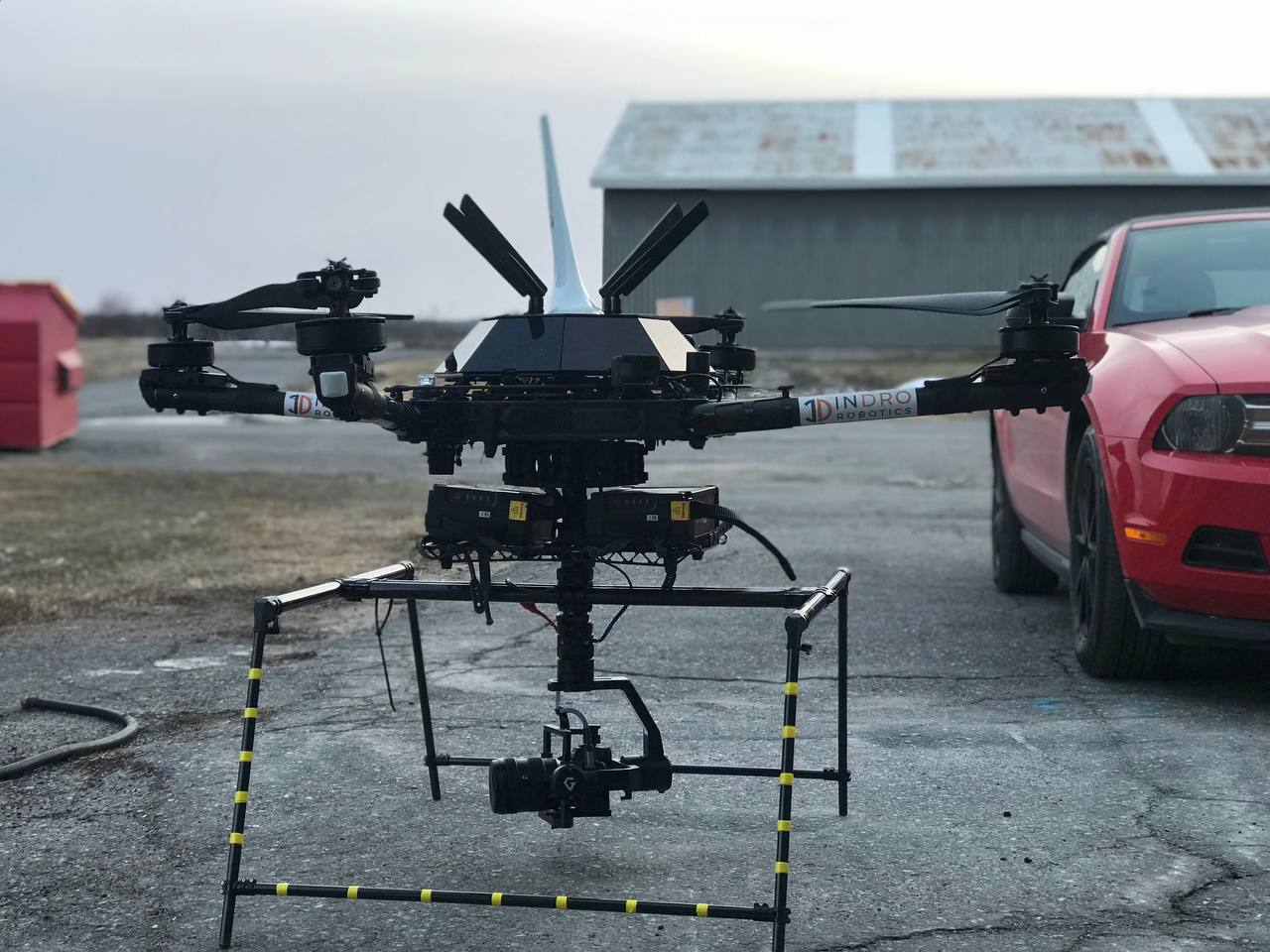
InDro Pilot
We knew the InDro Capsule module had the potential to truly transform the capabilities of Enterprise drones with Pixhawk flight controllers. And so we didn’t stop there. We built an entire platform to make the most of it. We call it InDro Pilot.
In a nutshell, it brings about both enhanced capabilities for the drone itself (ie 4G, 5G, dense data realtime uploads etc.) as well as enhanced options for the drone operator to further customize drone sensors and peripherals for any given mission via dashboard. All of that data is encrypted for secure download, direct-to-cloud upload, and Command & Control communication between the drone and our InDro Base ground station.
Because InDro Capsule enables the swift integration of additional sensors, we wanted to make that easy for the operator as well. InDro Pilot allows the pilot to customize their drone by simply adding software widgets for specific sensors.
You can find more details in this post about InDro Pilot. But we’ll leave you with a glimpse of our winch widget. Others are available for LiDAR, thermal and other sensors. It’s simply drag and drop. We’ll be rolling out more about this in 2023, including the much smaller, commercial version of InDro Capsule.
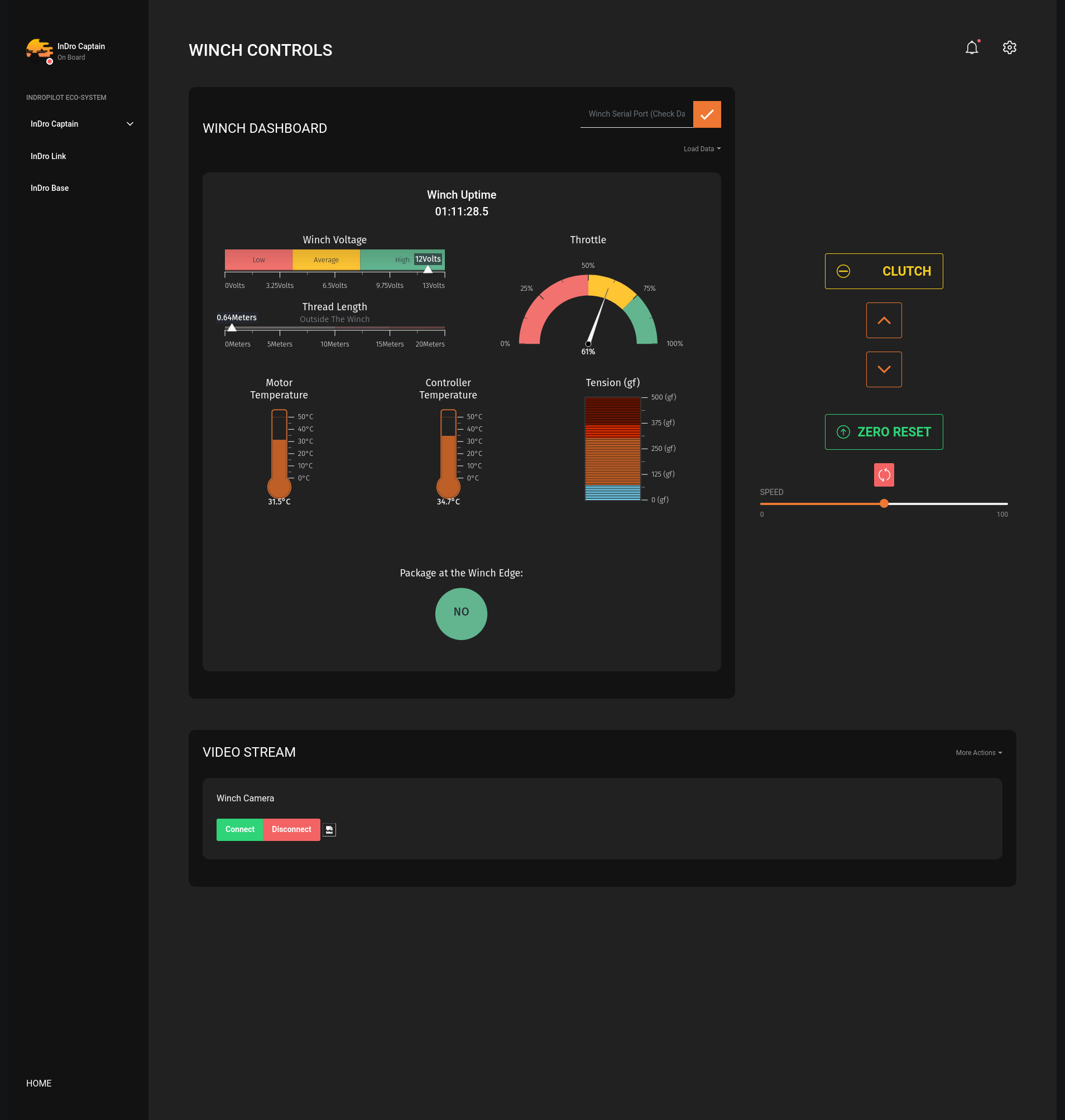
ROLL-E and London Drugs
It was also quite a year for InDro delivery robots. Specifically, the deployment of our teleoperated ROLL-E and ROLL-E 2.0 in two separate pilot projects in conjunction with London Drugs.
The western Canadian retailer was initially interested in seeing how consumers might react to receiving curbside deliveries from a robot – and how such deliveries might fit into the company’s future plans. InDro had previously partnered with London Drugs to demonstrate the secure delivery of prescription drugs to remote locations via drone, so it was logical to partner up on this effort as well.
Because of the global pandemic, some consumers are more comfortable with curbside pickups rather than entering a store. So the first pilot project, at a single London Drugs location in Victoria, focussed on that. Customers would place their orders online; ROLL-E would deliver their order to a pickup point in the parking lot outside.
The results? People seemed to like the robot. And a local CTV reporter even had a little fun with ROLL-E.
London Drugs, Part II
Those first curbside pickups were a success. And so we pushed ahead with a more sophisticated version of ROLL-E, coming up with a second-generation version. It has a secure and large cargo bay with a whopping 50kg capacity. And London Drugs was eager to try it out, this time for home deliveries in Surrey, BC.
ROLL-E 2.0 (which some employees have affectionately named “EVA”), featured some significant upgrades from the original, including:
- A total of six cameras, including two sets of depth perception cameras at the front and rear for greater situational awareness for the operator
- LED running lights, signal lights, brake lights
- Greater all-weather protection and a touchscreen interface for customers
And how did it perform? Well, like this:
Good dog
The year 2022 also brought us a new product line, and a new partnership. Specifically, we’re talking about Unitree Robotics – a Chinese manufacturer of highly capable and affordable quadruped robots.
We’ve already been modifying these robots, adding on something we call the InDro Backpack. That’s the equivalent of the InDro Commander, which allows for teleoperations and additional sensor integration. We’ve even mounted a LiDAR sensor on one of the Unitree robots, with excellent results. We see a lot of potential for remote inspections with these machines in 2023. Indro Robotics is proud to be a North American distributor of the Unitree line.
Plus, these robots are just a lot of fun. Here’s InDro account executive Luke Corbeth with the entry-level GO-1:
Meet LIMO
2022 also saw the release of the LIMO robot, intended for educational purposes, R&D and more. As a distributor in North America, we’ve delivered LIMO to many clients who have been doing their own R&D work with this very versatile and smart machine. It comes, out-of-the-box, with the following:
- An NVIDIA Jetson Nano, capable of remote teleoperation over 4G
- An EAI X2L LiDAR unit
- Stereo camera
- Four steering modes (tracked, Ackerman, four-wheel differential, and omni-directional)
Customers love this thing – and so do we. If you’d like to learn more about LIMO, check this out.

TCXpo
One of our highlights of the year was the TCXpo, a major public event put on by Transport Canada, Innovation, Science and Economic Development Canada, and Area X.O. InDro Robotics was one of the sponsors. Many Canadian technology companies were displaying their products, with an emphasis on Smart Mobility and other IoT devices.
InDro had its robots out in full swing; CEO Philip Reece was in charge of the airspace for the drone demonstrations – and a moderator for one of the excellent panel discussions. It was amazing to see the range of technologies on display and a clear sign that Smart Mobility is well on its way. Even the rain didn’t dampen the excitement.
You’ll hear a bit from Philip at the 2:18 mark of this video, and see him at 2:49.
Wait, there’s more!
Thanks for getting this far. We know you’ve got other things to do in 2023, so we’ll put a bow on this quickly with a few additional things we were up to in 2022.
Sister company Aerometrix continued its work doing methane detection and monitoring, using InDro Robotics pilots to carry out the work. The company has mapped methane emissions at petrochemical plants, gas wells, landfills – and even on agricultural sites. More on that work here.
We embarked on major long-term research at the University of British Columbia, in conjunction with Rogers, Honeywell and others. The project will use AI to help predict energy requirements for drone flights, taking into account payload, weather conditions, etc. It will also examine the capacity for 5G to carry out multiple simulataneous drone missions with minimal latency and interference. It will even compare the relative energy requirements of hydrogen-powered drones versus traditional LiPo batteries. Many more details can be found here.
We also launched FLYY, an online drone learning portal featuring one of Canada’s most recognized and respected instructors – InDro’s own Kate Klassen. If you’re looking to obtain your Basic or Advanced RPAS Certificate, schedule a Flight Review – or take a deeper dive into many other other drone course offerings – you’ll find it at FLYY. And if you’re part of an educational or company program, we offer group discounts. Email Kate for more info here.

Ssshhhhhh… it’s secret!
Finally, InDro continued work – and embarked on new work – with some very high-profile global clients in 2022. We can’t name names here due to NDAs, but we’re very pleased to be working on such interesting projects with such amazing companies. Trust us on this one; cool stuff is happening.
InDro’s Take
A company is, ultimately, only as good as its team. The accomplishments of 2022 reflect the skills, dedication and hard work of InDro employees in Vancouver, Victoria and at our Area X.O office in Ottawa.
“I’m incredibly proud of the work InDro accomplished in 2022,” says InDro CEO Philip Reece. “Our engineering and sales staff consistently punch above their weight, with multiple significant milestones – including excellent revenue growth – achieved in the past year. Just as gratifying is the fact our employees love what they do.”
That’s very true. On behalf of InDro Robotics, we wish you a Happy, Healthy and Prosperous 2023.
We look forward to sharing more as the year unfolds.
copyright 2022 © InDro Robotics all rights reserved

